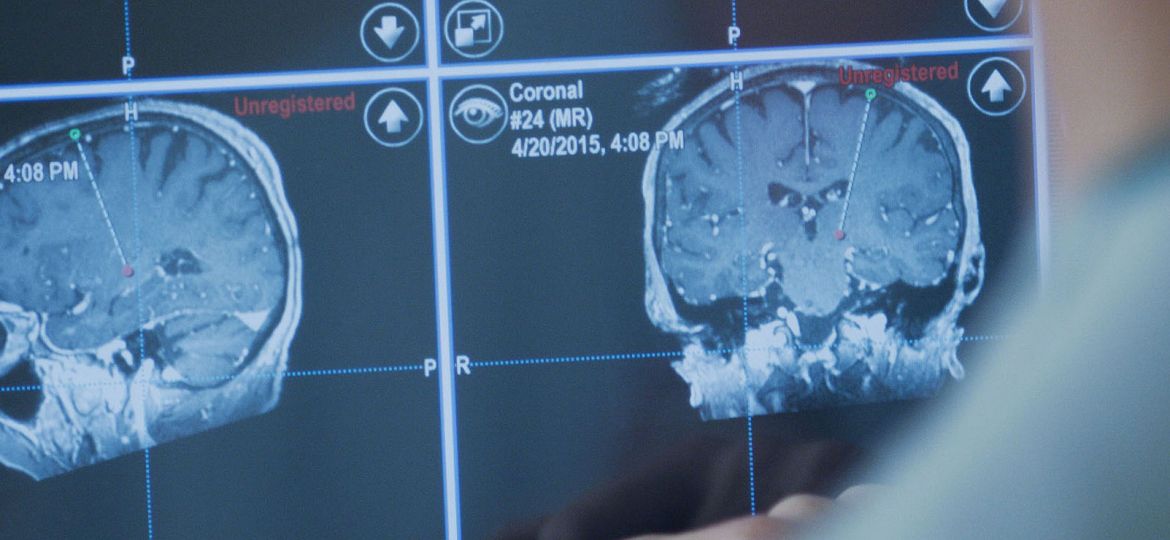
WHY THIS MATTERS IN BRIEF
From Parkinsons to Alzheimers, there are millions of people suffering from brain related disorders, now a new field of medicine, called Neuromodulation might let doctors turn these conditions on and off, for good.
Dr. Andres Lozano at the University of Toronto is one of the most cited neurosurgeons on the planet and he’s pioneered many of the techniques we use today in a field called Deep Brain Simulation (DBS), helping to transform Toronto Western Hospital into a global hub for neurosurgery. In any other time in history he’d have been revered the world over as a miracle worker who’s helped thousands of people suffering from a range of cognitive impairments recover either some – or all – of their previous abilities.
In DBS doctors insert a 1.3mm into the patient’s brain, and on the end of the rod are four contacts that get connected to a battery implanted into their chest cavity. Once everything’s in place the device sends an electrical current that stimulates the neurons in the affected part of the patient’s brain, and that’s when the therapy, if you want to call it that, begins. Today DBS is most commonly used in Parkinson’s disease patients in cases where traditional medication is no longer effective, and at the flick of a switch patients go from shaking uncontrollably and barely able to move to suddenly being still, relaxed and in almost full control of their body.
The gallery was not found!
But many scientists think that that is just the beginning for this technology. It’s had promising preliminary results in Alzheimer’s disease patients and is being used to treat everything from depression to epilepsy and bipolar disorder. Dr. Lozano also accidentally discovered that it can be used to bring back lost memories while he was trying to cure a patient of morbid obesity…
Of course, not everyone is so keen to have a metal spike implanted into their heads no matter what good may come of it. Luckily, but a variety of non-invasive techniques are also being developed that might eliminate the need for surgery. One such technique is called Transcranial Magnetic Stimulation (TMS), where high powered, coiled, magnets are attached to the outside of a person’s head that send an electromagnetic current down to the target area. Early results have shown the ability to enhance cognition by stimulating neurons in the affected area but the technique is still in its infancy so it will be a while before we see people walking down the street with magnets taped to their heads. That said though TMS has in the past helped play it’s part in helping volunteers communicate with each other using telepathy, but that’s another story.
Then, further down the line, some scientists are even starting to imagine a day when we might use genetic engineering, such as CRISPR, a revolutionary gene editing technique, that keeps making the headlines, I’ve discussed many times before, to borrow genes from electric eels to allow the brain to produce its own biochemically induced current.
All of this is opening up an exciting new field of medicine called neuromodulation that uses techniques such as DBS, TMS and others to try and enhance a variety of cognitive abilities. Many in the field believe that one day patients will be able to walk into a clinic, have their brains scanned to determine any deficiencies they have and then have the option to augment, or repair, those deficiencies.
Neuromodulation also includes the brain’s ability to manipulate objects in space, and already neural prosthesis have been developed that allow people to manipulate robotic arms using just their thoughts, and feel sensations. It’s also conceivable that through the coming Internet of Things (IoT) you will be able to control many of the objects in your home in the same way – with just a thought.
From there the next step would be a direct connection between your brain and the internet itself, giving you instant access to all human knowledge, as well as allow you to tap into the power of artificial intelligence (AI), using something that Elon Musk called a Neural Lace…
But I’m getting ahead of myself, for now just sit back and think of the possibilities – hang on your TV just turned on…
















